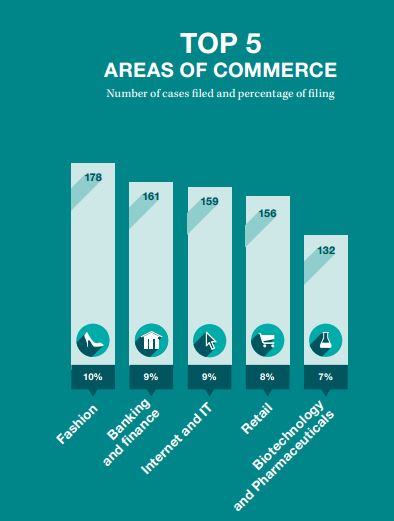In recent times, we’ve seen a major shift in the domains industry. With .COM names becoming scarce, the new gTLDs have gained a lot of popularity, to say the least. .XYZ has taken the market by storm, nTLDs like .ONLINE and .TECH have made a record number of registrations. As a reseller, you’re probably all too familiar with gTLDs and the rise. But the rise of these 1,800+ new TLDs has opened up the risk for trademark infringement. How does a brand safeguard its name on the newer extensions?
Enter Trademark Clearinghouse.
What is Trademark Clearinghouse?
To address the very issue we just spoke about, ICANN, the governing body for the Internet has set up a centralised system to verify the existing trademark rights for all new gTLDs.
Benefits of registration under TMCH:
Brands or trademarks with their records in the TMCH
- Can register identical domain names during the Sunrise Period
- Will be notified in case of violation of their trademark name on a new gTLD
- Will be notified if the identical name is registered
In an article we wrote in 2015, we mentioned what the TMCH was, the terms associated with it and the iconic cases like the CANYON.BIKE and SPEEDTEST.ORG. In this article, I want to throw some more light on its importance and the more recent domain disputes involving the new gTLDs.
Why is this important?
As I mentioned earlier, the new gTLDs have opened up brands and trademarks to infringement. There’s no doubt about it. According to WIPO, new gTLDs accounted for 10.% of WIPO’s UDRP caseload in 2015, which included a total of 4364 domain names! .CLUB, .EMAIL and .XYZ were the most common ones. Country-code TLDs accounted for 13.7% of all filings with WIPO in 2017.
In 2015, the top 3 industries filing complaints for cybersquatting were fashion, banking & finance & Internet & IT. You can see the full infographic here.
The Trademark Clearinghouse registration gives brand owners a verified record in the global database. Because the benefit of this is three-fold as I mentioned above, it’s an opportunity for trademarks to protect themselves (saving time & money) as well as take appropriate action against violators.
Cases of Cybersquatting
BMW
In 2015, car company, BMW won the rights to b.mw. MW being a ccTLD for Malawi. BMW fought the case on the grounds of belief that the domain was registered deliberately and in bad faith. Especially since the domain registrant was reportedly selling the domain for $1 million!
The defendant didn’t respond to the allegations. He in fact, also owns a a.mw, c.mw and could have perhaps won the case since it was not a stand-alone registration.
Hugo Boss
German luxury brand, Hugo Boss won the case and the rights to hugoboss.site in June last year. The fashion brand argued that the domain name could cause confusion with it’s Hugo Boss’ trademark and that the owner was using it in bad faith. The registrant did not reply to the complaint.
Hugo Boss registered its brand as an international trademark in April 1987. WIPO panelist, Ian Lowe said the brand had “undoubted, uncontested rights” to the domain owing to the brand name ‘Hugo Boss’.
LEGO
LEGO has filed 236 cases under the Uniform Dispute Resolution Policy since 2006 and has reportedly never lost a single case! The company either wins the case or the case is terminated before the investigation.
Strategy for Protecting your brand from Cybersquatting
- Check your trademarks: Your number 1 priority as a brand is to register your trademark with the TMCH. Make sure your trademark portfolio is up to date.
- Investigate: If you find your trademark being violated on a domain name, check if the domain resolves. If it does, make sure to take screenshots as evidence. Check internet archives for records of owner, date, current status of the website, expiry date, contact information, nameservers etc. and retain copies from Whois records.
- Look for intention or “bad faith”: If the purpose of the domain name is to sell, make a profit (you will know this if the registrant offers to sell the domain at a much higher price than the registration price) or just to disrupt the business of the trademark holder, you stand a very good chance of winning the case.
- Pursue cybersquatters: While you have to choose your battles (if there are too many), you also shouldn’t let go of violators. The least expensive way to file a complaint is through a Uniform Rapid Suspension (a quicker version of the Domain Name Dispute Resolution Policy). TMCH records can be used as proof for verifying trademark infringement under the URS.
Conclusion
Your online identity is extremely important. A threat of infringement should not be taken lightly as it can tarnish your brand image. The Trademark Clearinghouse has been specifically launched to set up support for the new gTLDs and is a must for a trademark wanting to protect its brand. As ICANN describes TMCH, it’s “the one-stop-solution for protecting your brand in the new gTLD era”.
There is no ads to display, Please add some




